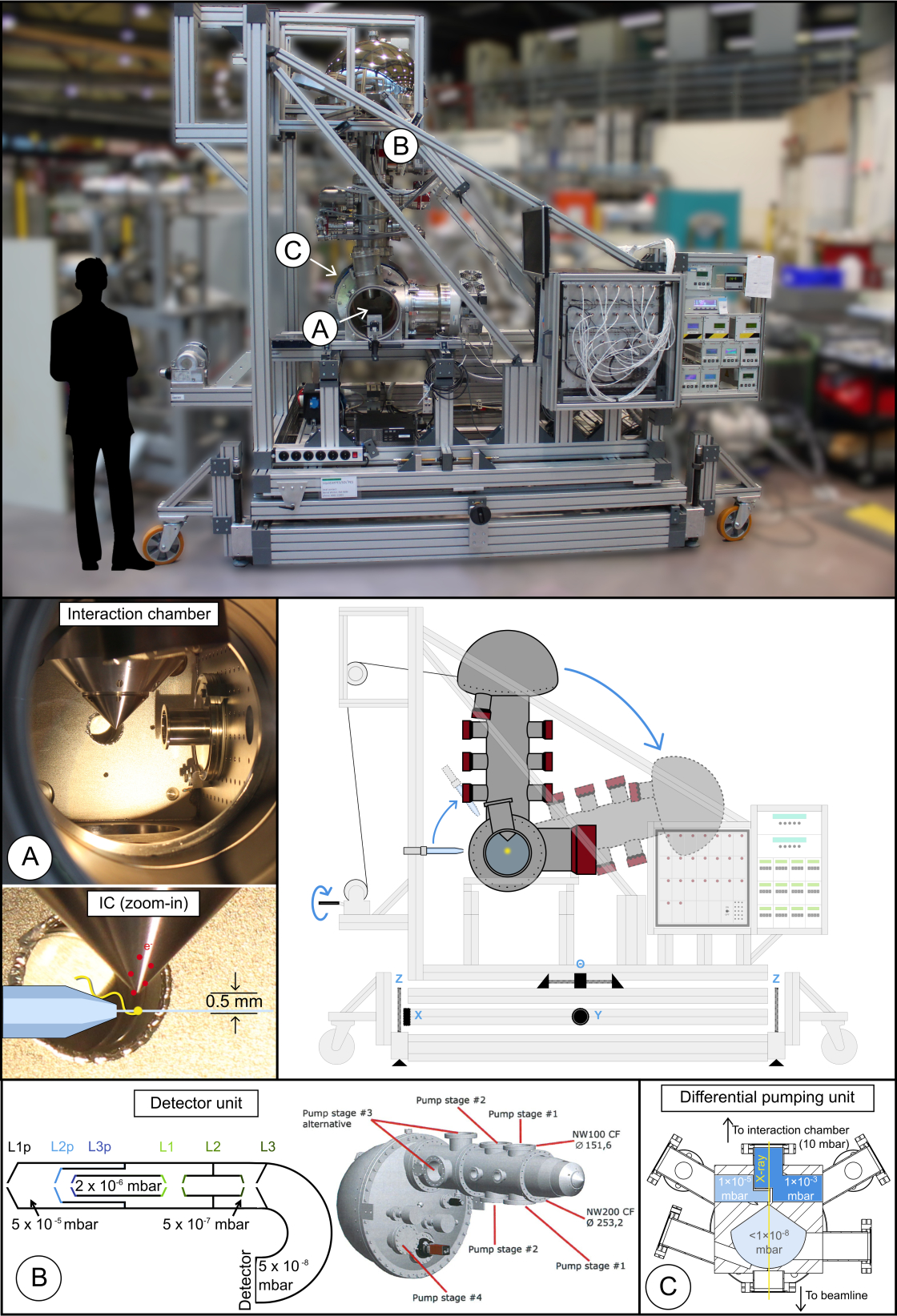Department Atomic-Scale Dynamics in Light-Energy Conversion
Experiment
SOL³PES setup: Near-ambient-pressure photoelectron spectroscopy
The experimental station SOL3PES is a state-of-the-art experimental setup to study solid, solution and solar-cell systems by soft X-ray photoelectron spectroscopy. It is equipped with a high-transmission hemispherical electron analyzer for detecting electrons emitted from small molecular aggregates, nanoparticles, or biochemical molecules and their components in (aqueous) solutions, either in vacuum or in an ambient pressure environment. In addition to conventional energy-resolved electron detection, SOL3 enables detection of electron angular distributions by the combination of a ±11° acceptance angle of the electron analyzer and a rotation of the analyzer in the polarization plane of the incoming synchrotron-light beam.
It is designed for:
- maximization of detection sensitivity in order to measure signal from poorly soluble molecules;
- simultaneous detection of electrons emitted at different angles from the solution–air/vacuum interface;
- detection of electrons emitted from the solid–solution interface;
- detection of all photoemission channels, i.e., valence and core-level photoionization, as well as local and non-local autoionization channels upon corehole ionization and excitation, from the solution–solid interface;
- measurements at (near-) ambient pressure conditions.

SOL³ setup with the hemispherical electron analyzer in two different detection positions (90° and 15° emission angles). Components for (fine-) adjusting of the frame and the analyzer are indicated. (A) Interaction chamber. (B) Sketch of the analyzer and electron lens (e.g., L1) and pre-lens (e.g., L1p) systems. Typical pressures are shown. (C) Top view of the three component differential pumping unit. This unit is mounted on the backside of the main vacuum chamber and cannot be seen in the main figure.
- SOL³ consists of three main components, the interaction chamber, the electron analyzer, and a differential pumping unit. The setup can be easily moved between different beamlines at BESSY II.
- When running the liquid jet (typically 10-25 µm diameter) experiment, the pressure in the interaction chamber is as low as 10-4 mbar, using one or more cold traps (metal cylinders with approximately 1000 cm² surface area each) filled with liquid nitrogen. Studies from liquid jets in a higher vapor-pressure environment, or any liquid-surface (stabilized at the respective relative humidity) ambient-pressure studies, can be performed up to pressures equivalent to 20 mbar H2O or 50 mbar N2 at the sample position.
- Emitted electrons can be detected at any angle between 90° and 0° (one quadrant), including the magic angle 54.7°, with respect to the polarization vector of the synchrotron light, which is typically in the floor plane.
- Unwanted magnetic fields, in particular, the earth magnetic field, are compensated by a Helmholtz-coil arrangement. Each of the three pairs of coils is powered separately.
- The electron spectrometer Scienta Omicron R4000 HiPP-2 is a high-resolution hemispherical electron energy analyzer developed for photoelectron spectroscopy using excitation energies ranging from UV to hard X-ray, suited for operation under ambient-pressure conditions up to tens of millibars. Our spectrometer consists of a pre-lens and an electrostatic lens system for imaging electrons of different energies (5–6000 eV) which are then guided into the section containing the two electrostatic hemispheres (radius of the outer hemisphere 200 mm). Electrons with a given preset pass energy (~8 % distribution) are imaged onto a 2D detector, consisting of a micro-channel plate and a CCD camera.
